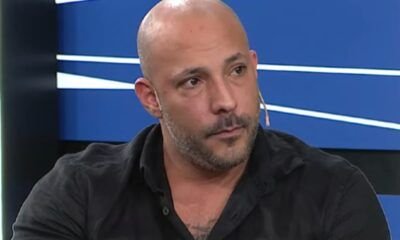INTERNACIONAL
GOP holdouts unmoved by Trump’s ‘big, beautiful’ trip to Capitol Hill
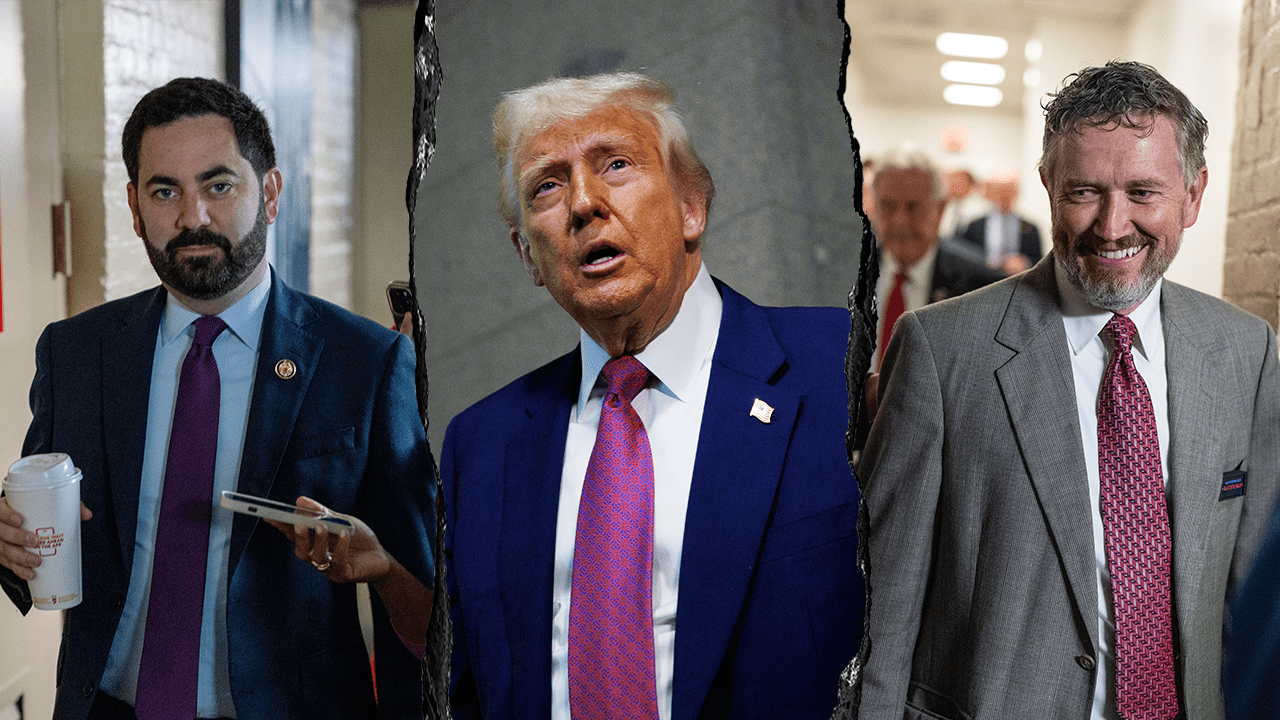
President Donald Trump’s rallying speech to House Republicans Tuesday morning wasn’t enough to convince some holdouts to unite behind his «big, beautiful bill» ahead of a planned vote this week.
Trump urged Republicans to cease infighting on Medicaid reform and state and local tax (SALT) deduction caps at the House GOP’s weekly conference meeting. Several Republicans who emerged said they were still concerned enough to oppose the bill, however.
House Freedom Caucus Chair Andy Harris, Rep. Eric Burlison of Missouri, Rep. Thomas Massie of Kentucky and representatives Nick LaLota, Mike Lawler and Andrew Garbino of New York told Fox News Digital Tuesday they would vote against the bill if changes were not made.
On the other hand, Trump did persuade some people. Rep. Ralph Norman of South Carolina, one of several Republicans to sink a committee vote on the bill Friday, told reporters he would review it and make a «judgment call» ahead of a 1 a.m. meeting to advance the bill through the House Rules Committee.
INSIDE TRUMP’S URGENT MEETING WITH HOUSE GOP TO PASS THE ‘BIG, BEAUTIFUL BILL’
Rep. Mike Lawler (left) and Rep. Thomas Massie (right) said President Donald Trump did not convince them Tuesday to vote for his «big, beautiful bill» in its current form. (Getty Images)
Norman said Trump did a «fantastic job» and delivered «one of the best speeches I’ve heard» at the House GOP meeting, and he urged his blue state colleagues to «take the words the president said to heart about SALT.»
CONSERVATIVE RIPS BLUE STATE REPUBLICAN’S PROPOSAL TO RAISE TAXES ON WEALTHY IN SALT DEBATE
Norman and Rep. Chip Roy, R-Texas, are both members of the powerful rules panel who have not been shy about their concerns with the current bill. The committee acts as the final gatekeeper before most legislation sees a full House vote.
Roy did not appear to attend Trump’s speech but told reporters Monday evening the 1 a.m. Wednesday vote should be postponed.
But the New York Republicans weren’t budging after Trump’s «big, beautiful» speech, maintaining the bill doesn’t go far enough to deliver for middle-class New Yorkers on the SALT deduction cap.
«This is the single biggest issue that I’ve talked about, and, with all due respect to the president, I’m not budging,» Lawler said.
«Between property taxes and income taxes, it blows well past the $30,000 cap with the $400,000 income cap. So, as I’ve said repeatedly, that is insufficient. We will continue the dialogue with leadership, but as it stands right now, I do not support the bill,» Lawler said.
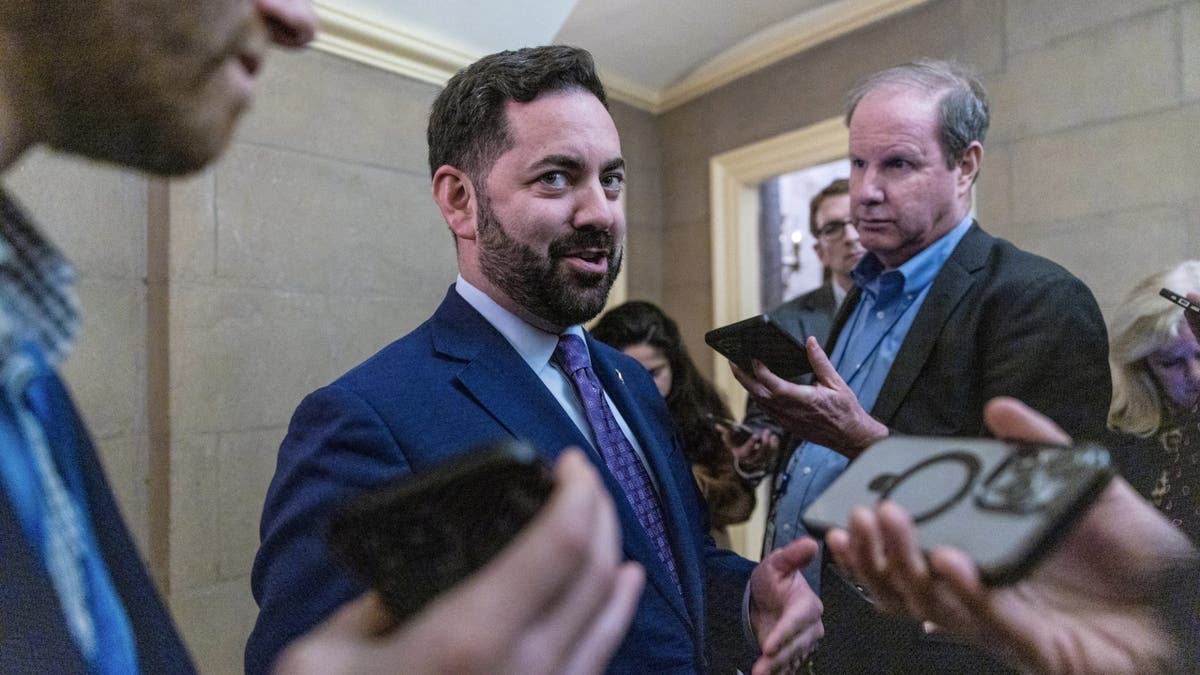
Rep. Mike Lawler, R-N.Y., speaks to reporters on Capitol Hill. (Reuters/Anna Rose Layden)
Lawler said SALT is one of the biggest issues affecting his district in New York and campaigned on never supporting a tax bill that doesn’t «adequately lift the cap.»
«The president can say whatever he wants, and I respect him, but the fact is, I certainly understand my district. I’m one of only three Republican members that won in a district Kamala Harris won, and I did so for reasons,» Lawler said.
«We need a little more SALT on the table to get to this,» fellow New York Republican LaLota added. «I hope the president’s presence motivates my leadership to give us a number that we can go sell back home.»
LaLota said while he is still a «no,» he hopes «the president’s presence here today motivates some folks in the Ways and Means Committee and my leadership to give us a number to which we can actually say ‘yes.’»
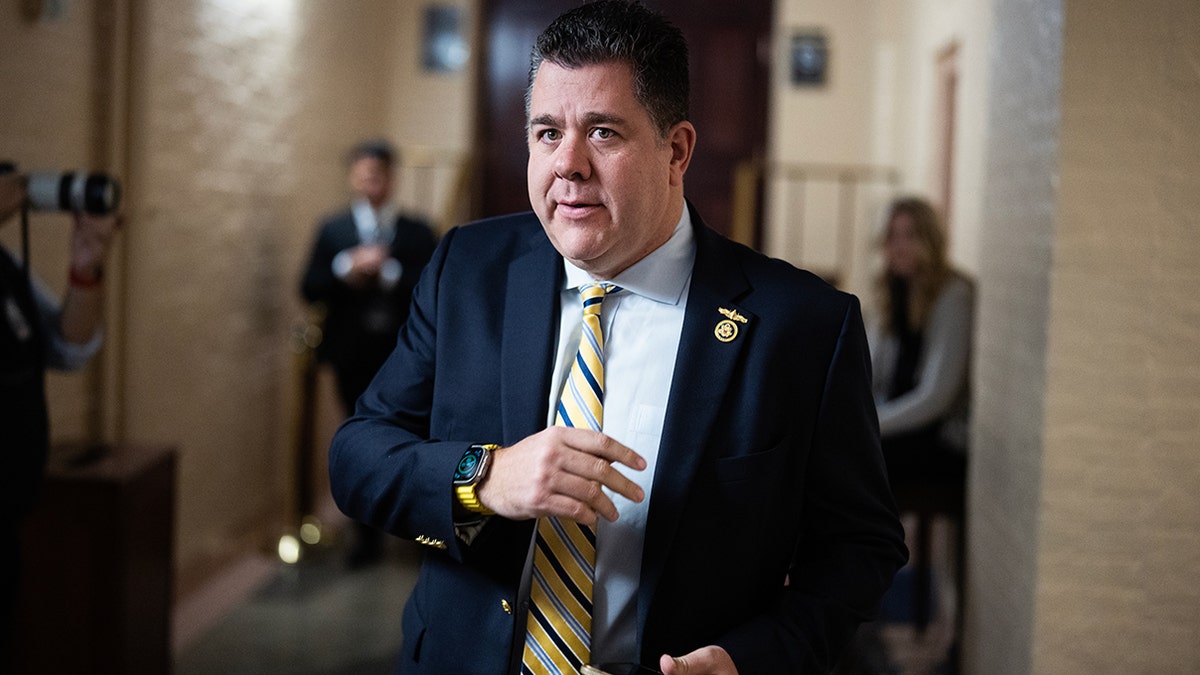
Rep. Nick Lalota, R-N.Y., leaves a meeting of the House Republican Conference. (Tom Williams/CQ-Roll Call, Inc via Getty Images)
When asked if Trump did enough to ease concerns in Tuesday’s meeting, Garbarino, another New York Republican, said, «No. There were no specifics. … It was more of a rally. We need to get this done.»
«We share President Trump’s call for unity within the House Republican Conference,» Rep. Young Kim, R-Calif., said in a joint statement after Trump’s visit to Capitol Hill.
«We hope his remarks today motivate the Speaker to advance a SALT proposal that delivers meaningful relief for our middle-class constituents, as we have worked in good faith with House Leadership for more than a year,» the statement from Kim, Garbarino, Lawler, LaLota and Rep. Tom Kean, R-N.J., said.
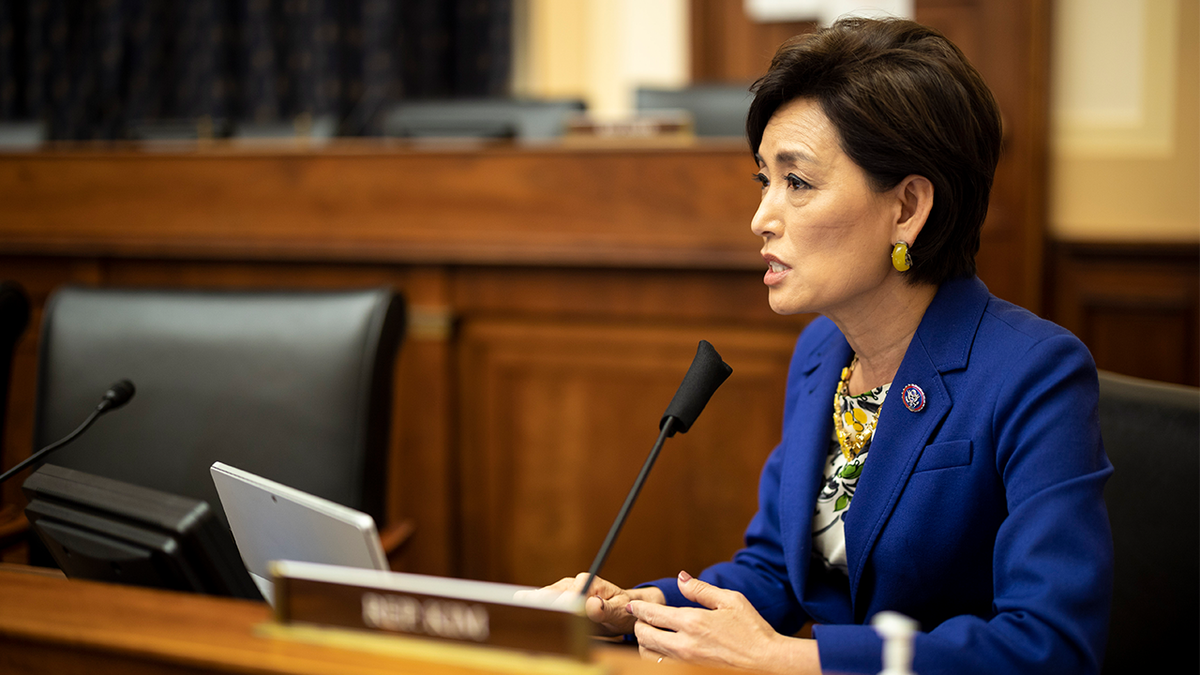
Rep. Young Kim, R-Calif., speaks during a hearing March 10, 2021, on Capitol Hill. (Ting Shen-Pool/Getty Images)
Meanwhile, Trump urged Republicans not to «f— with» Medicaid in his speech, though different factions came to different conclusions about what he meant.
Rep. Andy Ogles of Tennessee, who was not in the room for Trump’s speech, called for more cuts to the entitlement program in an X post Tuesday afternoon but told Fox News Digital he was opposed to the legislation as written.
«I agree with President Trump — we must crush the waste, fraud, and abuse. Liberal states like California and New York are abusing Medicaid — and making you pay for it. Illegal aliens and freeloaders have no right to taxpayer-funded benefits,» Ogles said on X.
Other fiscal conservatives, like Ogles, who were in the room, said the bill does not go far enough to reform Medicaid and would also vote «no» in the bill’s current form.
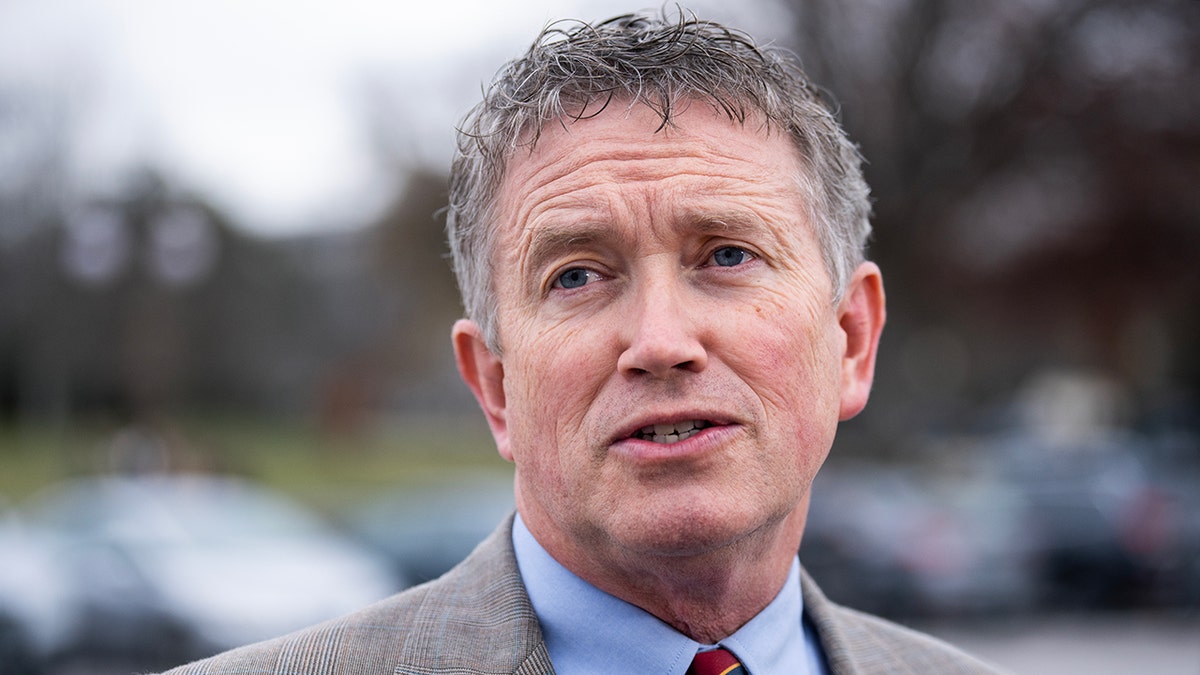
Rep. Thomas Massie, R-Ky., outside the Capitol building Dec. 18, 2024. (Tom Williams/CQ-Roll Call, Inc via Getty Images)
«I think it’s inappropriate for us to say we’re not going to touch it and then leave all of this fraud that’s happening in the system,» Burlison said.
Harris, the House Freedom Caucus chair, said, «I can’t support the bill. It does not eliminate waste, fraud and abuse in Medicaid. The president called for waste, fraud and abuse to be eliminated. I don’t think that’s where the bill sits.»
Massie, known for being a libertarian, was unconvinced by Trump’s appearance, telling reporters that his constituents didn’t «vote for increased deficits and Biden-level spending.»
He acknowledged that younger members or those who harbor ambitions for higher office would likely fall in line, however.
CLICK HERE TO GET THE FOX NEWS APP
«I think he probably closed the deal in there,» Massie said.
SALT deduction caps and Medicaid remain two of the biggest sticking points in Republican negotiations. SALT deduction caps primarily benefit people living in high-cost-of-living areas like New York City, Los Angeles and their surrounding suburbs. Republicans representing those areas have argued that raising the SALT deduction cap is a critical issue and that a failure to address it could cost the GOP the House majority in the 2026 midterms.
Republicans in redder, lower-tax areas have said in response that SALT deductions favor wealthy people living in Democrat-controlled states and that such deductions reward progressive high-tax policies.
It was Trump’s Tax Cuts and Jobs Act of 2017 that first instituted caps on SALT deductions, setting the maximum at $10,000 for both married couples and single filers.
SALT Caucus members have rejected House Republican leaders’ offer to increase that to $30,000.
Members of the conservative House Freedom Caucus, meanwhile, are pushing for the bill to be more aggressive in cutting waste, fraud and abuse in the Medicaid system, including a faster timeline for implementing work requirements for able-bodied recipients. Currently, the legislation has work requirements kicking in 2029.
They also want to restructure Medicaid cost-sharing to put a bigger burden on the states. Moderates, meanwhile, have been wary of making significant cuts to the program.
House GOP leaders are hoping to hold a full House vote on the bill this week.
Politics,House Of Representatives,Republicans,Donald Trump
INTERNACIONAL
Guerra entre Israel e Irán: Lo que hay que saber sobre los combates

¿Qué pasó en Irán?
¿Quién murió en el ataque de Israel?
¿Qué pasó en Israel?
¿Por qué Israel atacó a Irán?
¿Cómo respondió Estados Unidos?
INTERNACIONAL
Trump heads to Canada for first G7 conference, continues focus on Israel as 22nd week back in office kicks off

NEWYou can now listen to Fox News articles!
President Donald Trump is expected to have a busy 22nd week back in the Oval Office after celebrating his 79th birthday and attending a massive military parade honoring the Army’s 250th anniversary over the weekend, including traveling to Canada on Sunday for his first G7 summit since his inauguration.
The Israeli Iron Dome air defense system fires at incoming missiles over Tel Aviv, Israel, Friday, June 13, 2025. (AP Photo/Leo Correa)
Israel launched preemptive strikes on Iran
Trump’s week is expected to largely focus on the Middle East after Israel launched preemptive strikes on Iran on Thursday evening after months of attempted and stalled nuclear negotiations and subsequent heightened concern that Iran was advancing its nuclear program.
TRUMP JUGGLES CHINA FRAMEWORK TRADE DEAL, LA’S ANTI-ICE RIOTS AND ISRAEL’S IRAN STRIKE IN 21ST WEEK IN OFFICE
The strikes, which were part of Israel’s «Operation Rising Lion,» targeted Iran’s nuclear and missile infrastructure and killed at least four Iranian military leaders.
Iran said the strikes were a «declaration of war» and has subsequently launched its own strikes on Israel, which have rocked residential communities and left locals killed and buried under the rubble of buildings.
Trump reported on Thursday that the U.S. was made aware ahead of Israel’s initial strikes before they occurred, and he has repeatedly underscored that he wants to reach a nuclear deal with Iran to end the «death and destruction.»
«I gave Iran chance after chance to make a deal. I told them, in the strongest of words, to ‘just do it,’ but no matter how hard they tried, no matter how close they got, they just couldn’t get it done. I told them it would be much worse than anything they know, anticipated, or were told, that the United States makes the best and most lethal military equipment anywhere in the World, BY FAR, and that Israel has a lot of it, with much more to come – And they know how to use it,» Trump posted to Truth Social on Friday.
IRANIAN MISSILES KILL OVER A DOZEN AS ISRAELI STRIKES DESTROY TEHRAN’S ENERGY INFRASTRUCTURE
«Certain Iranian hardliner’s spoke bravely, but they didn’t know what was about to happen. They are all DEAD now, and it will only get worse!» he added.
Iran, however, pulled out of nuclear talks with the U.S. that were scheduled for Sunday in Oman.
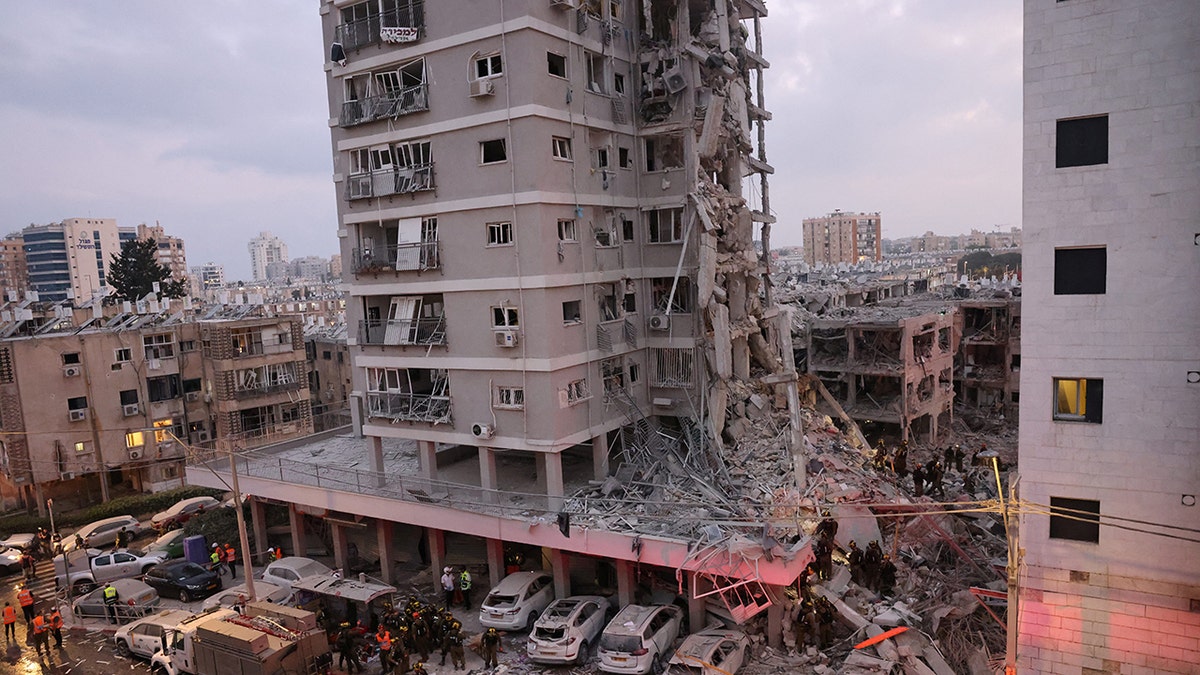
People stand near a residential building that was hit by an Iranian missile in central Israel on June 15, 2025. (REUTERS/Tomer Appelbaum)
Trump has continued to push for Iran to make a deal, outlining in a Truth Social post on Sunday that he will use trade with the U.S. to leverage a deal between Israel and Iran while citing previous examples of how his intervention led to peace between other nations.
ISRAEL LAUNCHES SWEEPING STRIKE ON IRAN WHILE TRUMP ADMINISTRATION SEEKS DIPLOMATIC SOLUTION
«During my first term, Serbia and Kosovo were going at it hot and heavy, as they have for many decades, and this long time conflict was ready to break out into WAR,» he posted. «I stopped it (Biden has hurt the longer term prospects with some very stupid decisions, but I will fix it, again!). Another case is Egypt and Ethiopia, and their fight over a massive dam that is having an effect on the magnificent Nile River. There is peace, at least for now, because of my intervention, and it will stay that way! Likewise, we will have PEACE, soon, between Israel and Iran! Many calls and meetings now taking place. I do a lot, and never get credit for anything, but that’s OK, the PEOPLE understand. MAKE THE MIDDLE EAST GREAT AGAIN!»
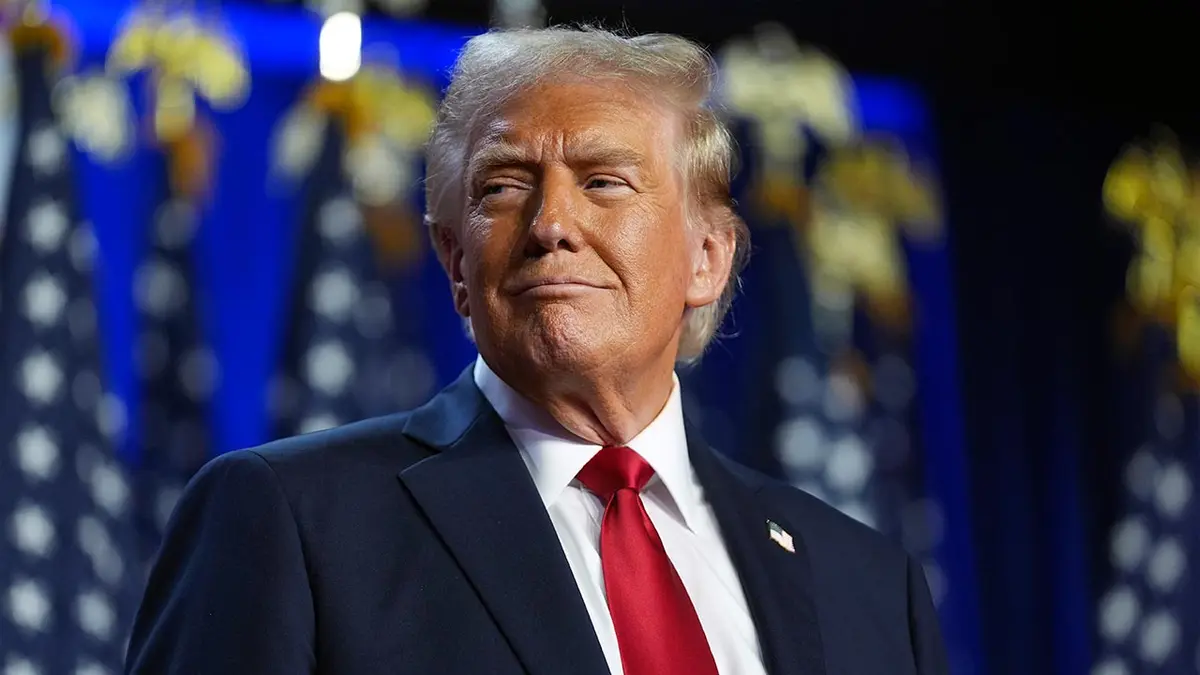
President Donald Trump (Evan Vucci/AP)
Trump heads to G7 summit
Sunday evening, Trump headed to a remote ski resort town in Alberta, Canada, where he will meet with leaders from Canada, France, Germany, Italy, Japan, the European Union and the United Kingdom on Monday and Tuesday.
The conference of leaders representing seven of the world’s largest economies marks Trump’s first G7 summit of his second administration and comes amid the escalating conflict between Israel and Iran.
OLD FIGHT REKINDLED BETWEEN ENVIRONMENTALISTS AND LOGGERS OVER TRUMP EXECUTIVE ORDER ON TIMBER
The summit is expected to focus on conflicts in Israel, the ongoing war between Russia and Ukraine, Trump’s tariff policies and the world’s economy. Ukrainian Prime Minister Volodymyr Zelenskyy and Mexican President Claudia Sheinbaum are also expected to attend the summit.
The summit is slated to run from Monday through Tuesday in the Canadian Rockies, which last hosted a G8 summit in 2002 when Russia was among the countries represented in the informal forum.
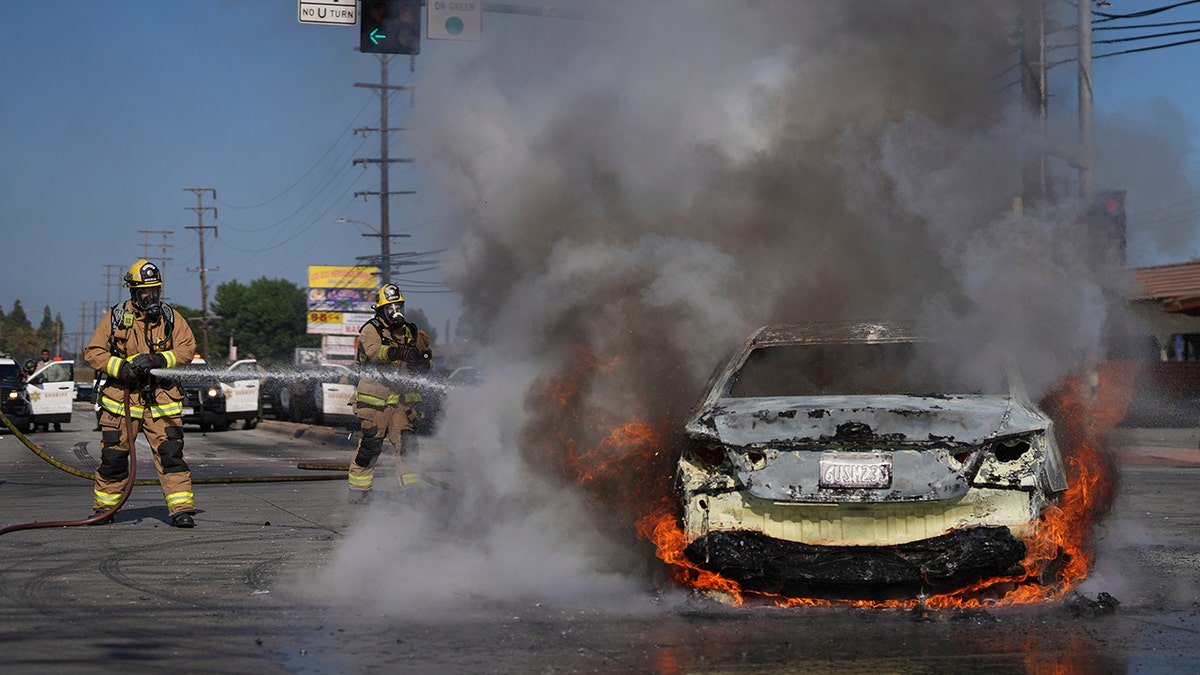
Firefighters douse a burning car in Compton, Calif., on June 7, 2025, during a protest in response to federal immigration operations. (AP Photo/Eric Thayer)
Violent protests against Trump administration continue
Trump is expected to continue juggling violent protests and riots this week stemming from his administration’s efforts to deport millions of illegal immigrants who flooded the U.S. under the Biden administration.
PHOTOS: SEE THE ANTI-TRUMP VIOLENCE THAT HAS UNFOLDED ON LA’S STREETS ACROSS THE LAST WEEK

U.S. Customs and Border Protection agents face demonstrators as tear gas fills the air outside the U.S. Immigration and Customs building during a protest in Portland, Ore., on June 14, 2025. (AP Photo/Jenny Kane)
Riots broke out in Los Angeles on June 6, when federal law enforcement officials converged on the city to conduct immigration raids. Local elected Democrat officials, such as Gov. Gavin Newsom and L.A. Mayor Karen Bass, condemned the raids while offering words of support to illegal immigrants. The riots spiraled throughout the week as agitators targeted police with heavy objects, looted stores, set cars on fire and shut down highways.
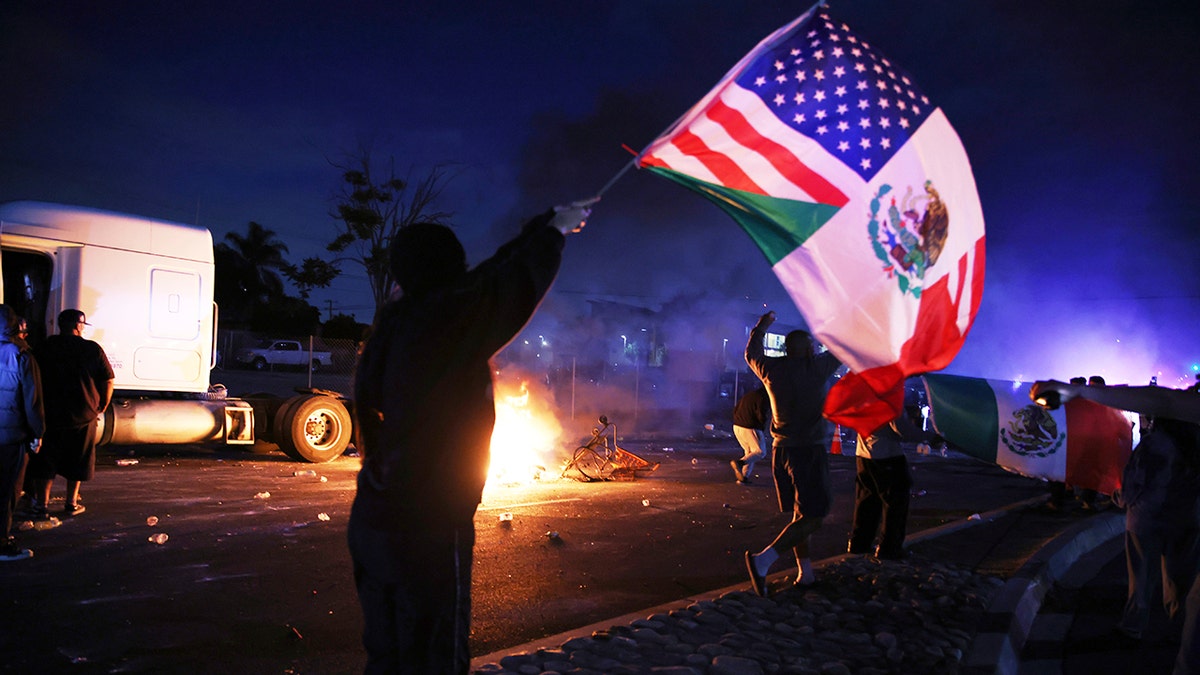
A demonstrator waves an American and Mexican flag during a protest in Compton, Calif., on June 7, 2025. (AP Photo/Ethan Swope)
LIBERAL MEDIA DOWNPLAYS LA RIOTS, DISMISS VIOLENCE AS ISOLATED WHILE TOUTING ‘PEACEFUL’ ANTI-ICE PROTESTS
On Saturday, «No Kings Day» protests were held in cities nationwide as critics of the president took to the streets to argue that Trump has conducted himself like a monarch. The protests were held on the same day as the massive military parade in Washington, D.C., that honored the Army’s 250th anniversary, which fell on the same day as Flag Day and Trump’s 79th birthday.
CLICK HERE TO GET THE FOX NEWS APP
The protests devolved into violence in a handful of cities, most notably on the West Coast in Portland, Ore., where four law enforcement officers were injured in a riot, as well as continued violence in Los Angeles.
INTERNACIONAL
Could private security contractors be the ‘day after’ solution in Gaza?

NEWYou can now listen to Fox News articles!
The question of a «day after» plan in the Gaza Strip has plagued negotiations between Israel, the U.S., Arab nations and Hamas for months and has ultimately led to the terrorist network’s refusal to release the 55 hostages still held there.
However, foreign policy leaders and security experts based in Washington may have the key that could provide a solution to help rebuild the war-torn Gaza Strip where others cannot: private security contractors (PSC).
PSCs, which have heavy experience in the Middle East and decades of lessons learned to draw from, could be used as non-state actors to provide stability and a path forward for the Palestinians, but they would have to start with humanitarian aid, John Hannah, former national security advisor to Dick Cheney and current Randi & Charles Wax senior fellow at the Jewish Institute for National Security of America (JINSA), told Fox News Digital.
Palestinians continue their daily lives under harsh conditions amid the rubble of destroyed buildings in the Jabalia refugee camp in northern Gaza following the enforcement of a ceasefire agreement on Feb. 10, 2025. (Mahmoud ssa/Anadolu via Getty Images)
ISRAEL OBJECTS TO FOREIGN NATIONS SANCTIONING ITS OFFICIALS
In a plan hatched out following Hamas’ Oct. 7, 2023 attack on Israel and the subsequent outbreak of war in the Gaza Strip, a group of eight members with JINSA and the Vandenberg Coalition comprised a report that detailed how the handling of humanitarian aid could completely change security in the region.
The plan, in part, initially looked similar to the mechanism known as the Gaza Humanitarian Foundation (GHF), which is backed by the U.S. and Israel, and which launched last month to distribute aid to Palestinians.
However, the plan comprised by Hannah and the team took it a step further and argued that these aid actors should also be involved in rebuilding Gaza.
«We thought humanitarian issues was the best way [forward],» Hannah said. «It was the common denominator that would allow all of the major stakeholders that want to get to a better ‘day after’ – Israel, the United States, the key pragmatic Arab states – they all could agree that we can’t agree on a political vision for Palestine 10 years from now, and the issue of a Palestinian state, but we can all agree on this apple pie and motherhood issue that we don’t want to see starving, suffering Palestinians.»
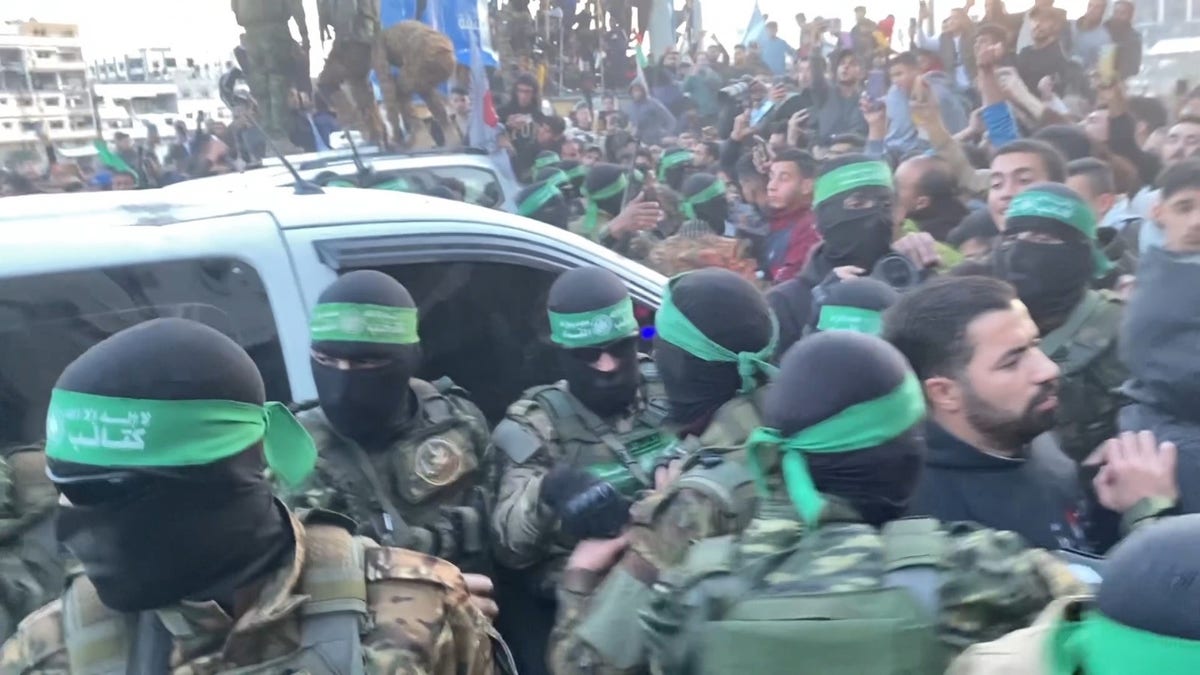
Hamas terrorists emerge in a show of strength, escorting Red Cross vehicles carrying three Israeli hostages to be released as part of the ceasefire deal. (TPS-IL)
The Israel Defense Forces had already detailed the need to eliminate Hamas following the deadliest-ever attack on Israel, but the group of eight experts also identified that aid, long used by Hamas to maintain power by using it to incentivize support and recruitment, and to punish opposition, needed to be the key to cementing actual change.
«We needed a solution on humanitarian aid,» Hannah said. «And when we looked around the world, who could do this, take over the humanitarian aid? We were left with one option.»
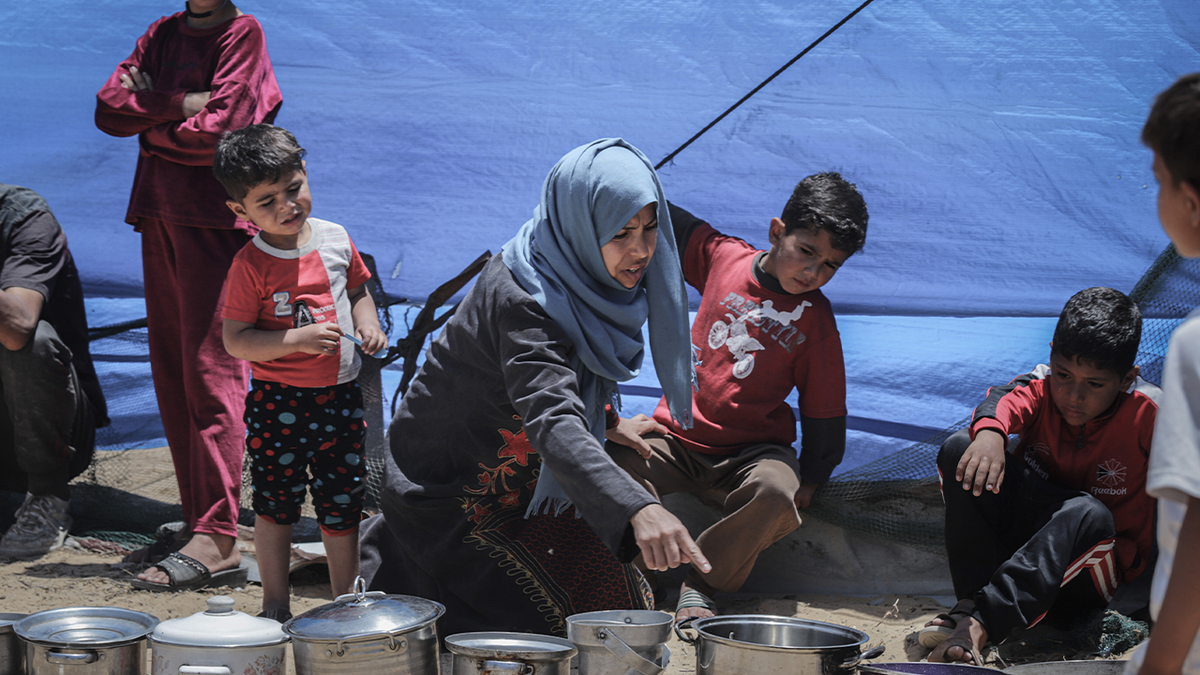
Displaced Palestinians line up pans to collect hot food from a charity food distribution center in Gaza City, northern Gaza, on Tuesday, May 27, 2025. (Ahmad Salem/Bloomberg via Getty Images)
ISRAEL’S NAVY HITS HOUTHIS IN YEMEN IN ‘UNIQUE’ STRIKE AFTER TRUMP PROMISES END TO US OPS
«We didn’t think it should be the Israel Defense Forces. Israel lacks legitimacy with the Palestinian population, and frankly, it had its hands full doing the military job of defeating Hamas,» he added. «American forces weren’t going to do it. We didn’t think Arab forces would step up and do this. And the U.N. system as it existed under UNRWA was illegitimate in the eyes of Israel.»
The group not only briefed the Biden and Netanyahu administrations on the proposal, but held numerous discussions with Israeli officials in 2024 on how such a plan could work.
Retired U.S. Army Lt. Gen. Michael Barbero – who served as deputy chief of staff, Strategic Operations for Multinational Forces-Iraq for 2007-2008 and who was tasked by Gen. David Petraeus to create a system of accountability over PSCs in Iraq following the Blackwater incident in September 2007 known as the Nisour Square massacre – also briefed Israeli officials on how a PSC mechanism could work in the Gaza Strip.
Progress on the proposal appeared to stall by summer last year as then-President Joe Biden and Israeli Prime Minister Benjamin Netanyahu were at increasing loggerheads over humanitarian concerns and mounting civilian Palestinian death tolls.
However, Hannah questioned whether the seed had been planted with Israel by the time the Trump administration re-entered office, enabling the GHF to come in and start distributing aid.
The GHF, though it has distributed over 16 million meals since it began operations in late May, saw a chaotic start with starving Palestinians rushing certain sites and reports of violence unfolding.
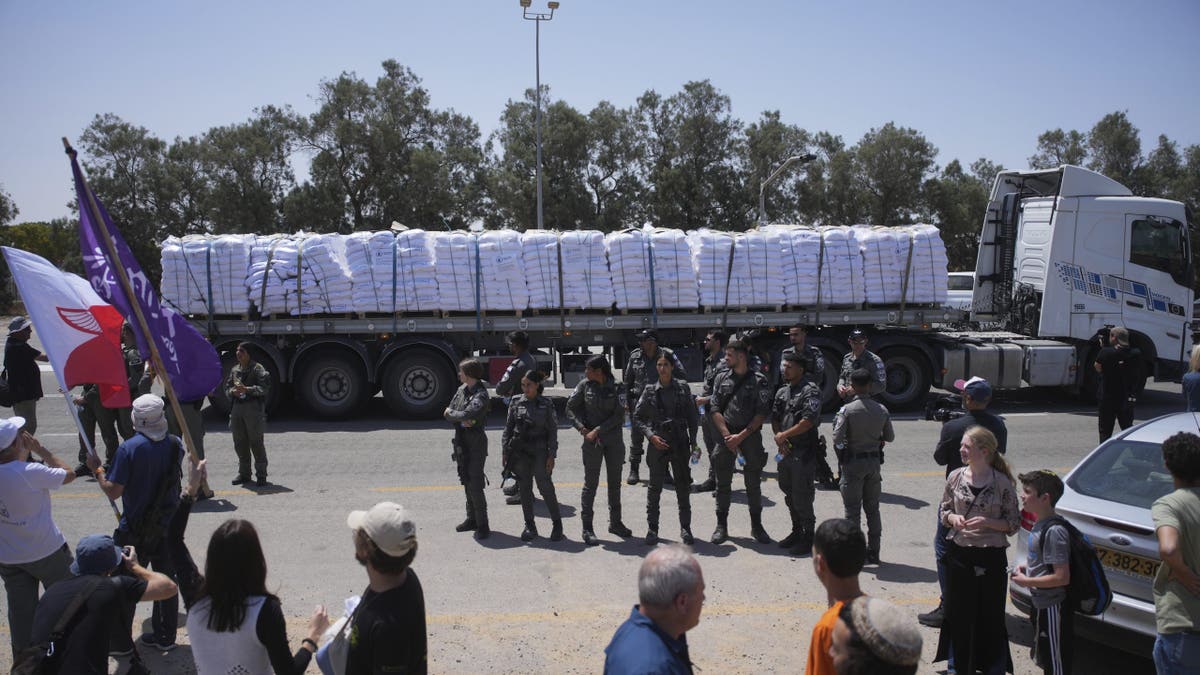
A truck loaded with humanitarian aid for the Gaza Strip makes its way to the Kerem Shalom crossing in southern Israel, Wednesday, May 21, 2025. (AP Photo/Ohad Zwigenberg)
THERE’S A WAY TO AID GAZA. I KNOW, MY FOUNDATION JUST HELPED DELIVER 7 MILLION MEALS… WITHOUT INCIDENT
Though the reports of the level of chaos have reportedly been exaggerated by Hamas – which ultimately would benefit from the GHF’s failure as experts have explained – the group initially drew some criticism over transparency concerns, though the group has been looking to remedy this with regal updates.
The group, which saw its third leadership in as many weeks earlier this month, told Fox News Digital that despite some frustration among world leaders and aid groups, its goal is to work with major organizations like the United Nations and others to better distribute aid across Gaza where those programs are still flagging.
U.S. Ambassador to Israel Mike Huckabee confirmed last month that the GHF’s distribution centers would be protected by private security contractors.
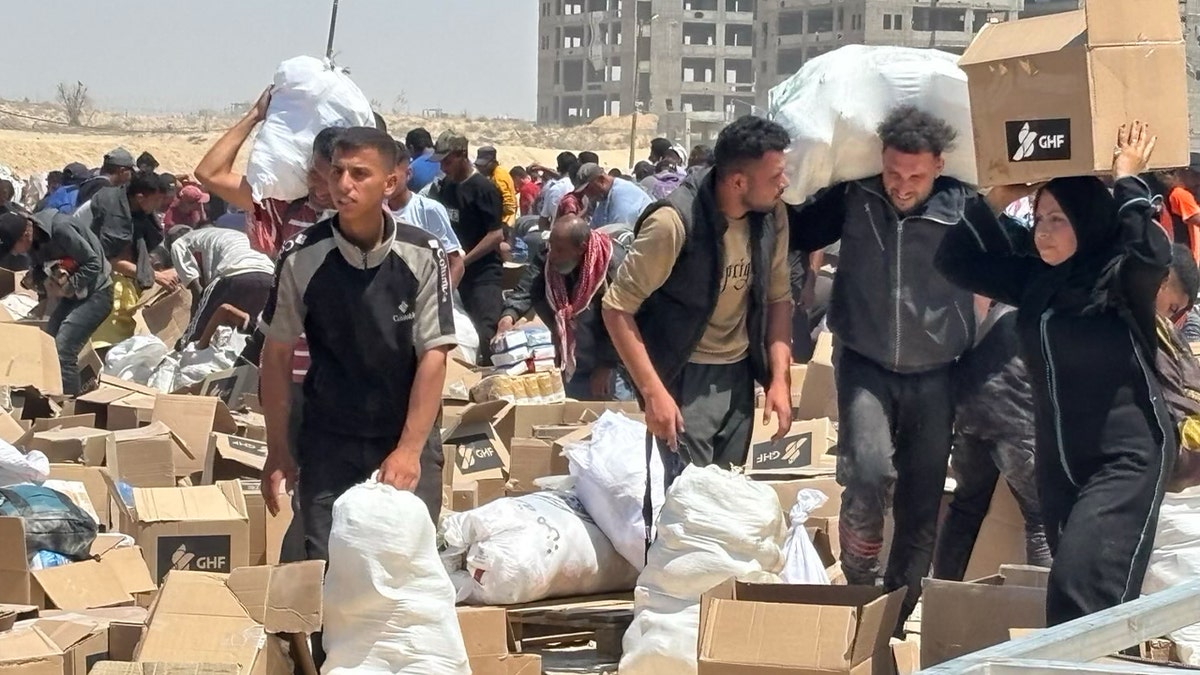
Palestinians in Gaza get aid from the U.S. and Israel-backed Gaza Humanitarian Foundation. (Gaza Humanitarian Foundation)
Though while Washington backs the effort, State Department spokeperson Tammy Bruce has repeatedly made clear that the GHF is «an independent organization» that «does not receive U.S. government funding.»
However, she has also refused to confirm whether any U.S. officials are working for the program.
PSCs have a storied history in the Middle East, and not only the U.S. war on terror. They have been used by nations like Saudi Arabia and the UAE, which could lend them a level of acceptance that would not be attainable by another force.
The proposal issued by Hannah and his colleagues took the use of PSCs one step beyond humanitarian aid and argued they could make a positive impact in the actual reconstruction of the Gaza Strip – an idea that was also presented to the Trump administration this year.
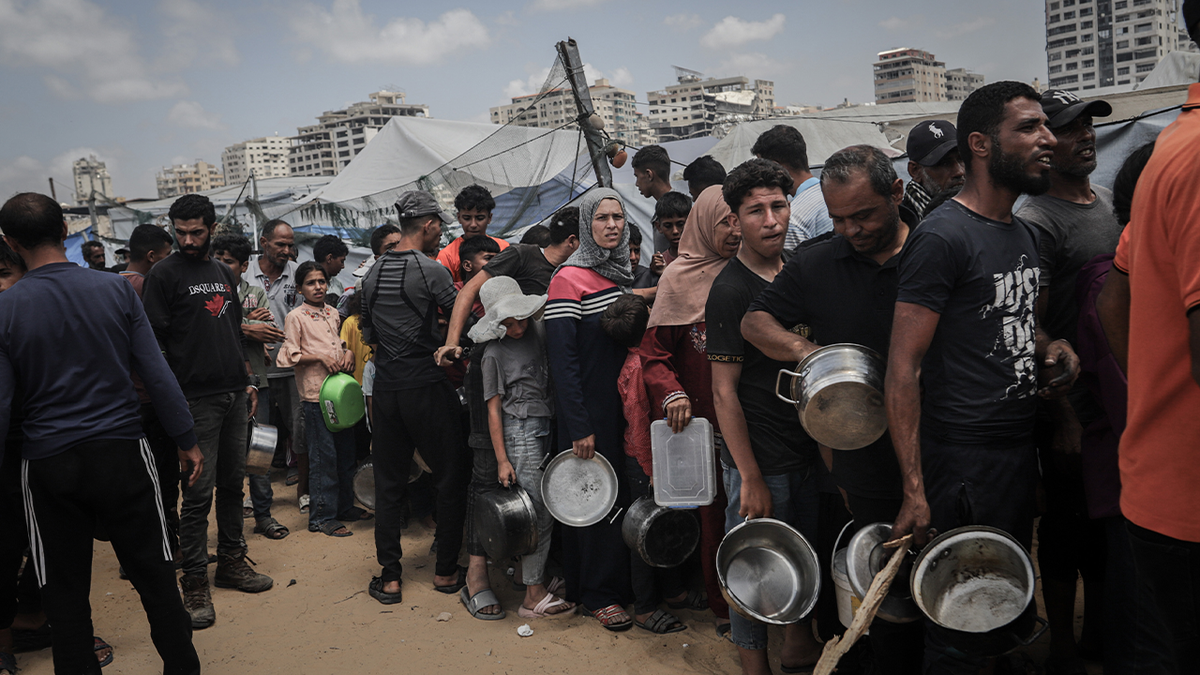
Displaced Palestinians wait to receive a free meal from a charity food distribution center in Gaza City, northern Gaza, on Tuesday, May 27, 2025. (Photographer: Ahmad Salem/Bloomberg via Getty Images)
«It’s not at all foreign to these Arab parties that you might employ PSCs for certain critical missions,» Hannah said. «Our idea was, let’s scale it up. Let’s unify the effort. Let’s have America and the Arabs lead it.
«The Arabs would put in most of the humanitarian aid workers, a lot of the financing, and then they would hire some of these international PSCs with a lot of experience to come in and protect those operations,» he explained. «You’d have the Arabs engaged, which we thought was absolutely critical.»
The plan also included bringing in other international aid organizations that would work with these PSCs to expand developments like housing projects, community development and infrastructure repair to restore electricity and water.
«And eventually, hopefully, begin to identify new leadership, local leadership in Gaza, who would be prepared to cooperate with the operations of this nonprofit entity,» Hannah said. «Local Gazans of goodwill, who wanted to be rid of Hamas, who this entity could provide some support to, some protection to so they can, could begin rebuilding Gaza civil administration.»
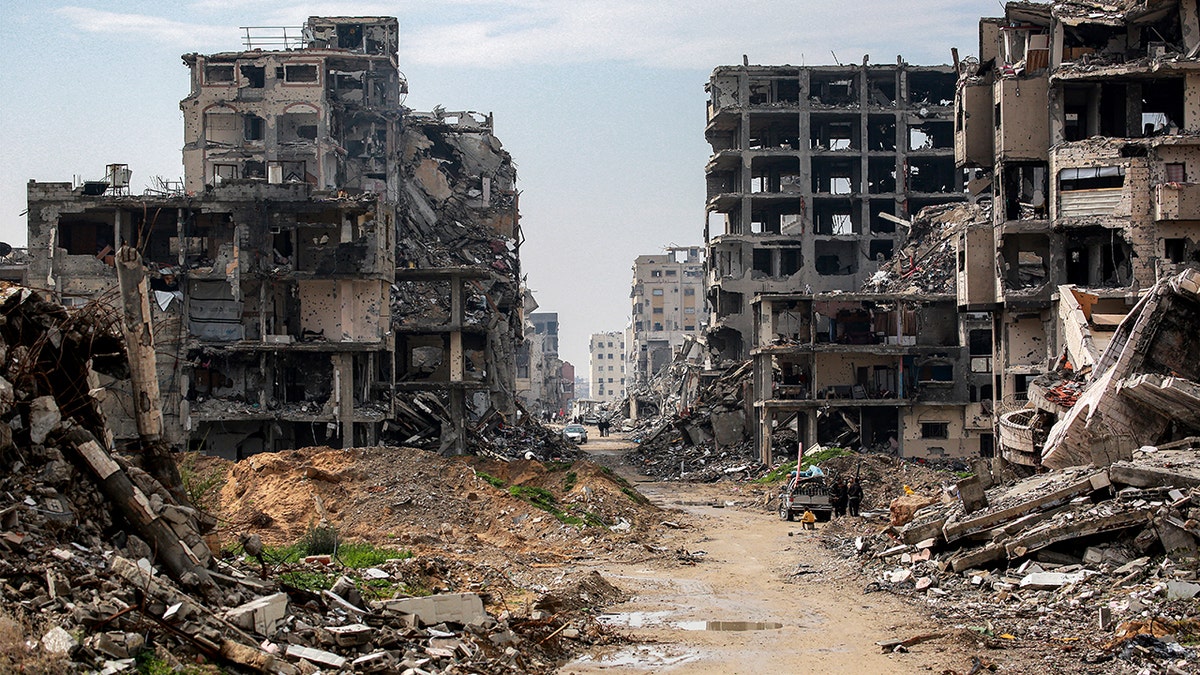
Destroyed buildings are pictured in the west of Beit Lahia in the northern Gaza Strip on Feb. 11, 2025 amid the current ceasefire deal in the war between Israel and Hamas. (BASHAR TALEB/AFP via Getty Images)
CLICK HERE TO GET THE FOX NEWS APP
The plan also addressed the perpetual question of how to deter the next generation of Hamas terrroirsts, particularly amid Israeli military operations.
Hannah argued this issue could be addressed by simultaneously training a «non-Hamas new Palestinian, local Palestinian security force» that would not only have the trust of the local population but could also gain the trust of Israel.
Hannah said he still believes this plan could be a tenable next step to securing the Gaza Strip but urged the Trump administration to take a more direct diplomatic role by leaning on Arab, European and Israeli partners to make it happen.
The White House did not respond to Fox News Digital’s questions about this reporting.
-

 POLITICA1 día ago
POLITICA1 día agoDiputados: impulsan un proyecto para que los fondos decomisados de la causa Vialidad vayan a hospitales infantiles
-

 POLITICA13 horas ago
POLITICA13 horas agoDiputados de Unión por la Patria hablaron de “proscripción” contra CFK: “Es un atentado contra la democracia”
-

 DEPORTE3 días ago
DEPORTE3 días agoAl Ahly vs. Inter Miami: formaciones, hora y dónde ver por tv





























